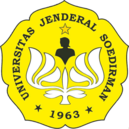THE ANALYSIS OF SPEECHNOTE APPLICATION FOR MEASURING THE ACCURACY OF STUDENTS’ PRONOUNCIATION
Abstract
Technology, education, and internet have been one of education’s part in this era. Learning independently is one of the choice for many students, not only effective to get understand but also time effectiveness are some of the reasons. All the thing that we learnt in the school is how to improve speaking, listening, writing, and reading skill. That’s why pronunciation become hidden subject which students don’t have to learn it. The problem in our education is English still foreign language for us, so it would be difficult to learn pronunciation autonomuosly or independently. Speechnote is one of the application which was created by WellSource for dictating spoken language to written language with high accuracy. The application helped students to learn pronunciation independently without being watched by the expert. The used method is descriptive-kualitatife and data collective which are recording and filling out questionnaire by 36 participants of students X.IS-1 SMA N 15 Semarang. The result of this research are the error of aplication, the accuracy of recording,recognizing misspronunciation, and the connection of increasing pronunciation by using speechnote.
References
Darmadi, H. (2013). Metode Penelitian Pendidikan dan Sosial. Bandung: Alfabeta.
Eady, M. J., & Lockyer, L. (2013). Tools for learning: technology and teaching strategies: Learning to teach in the primary school. Queensland University of Technology, Australia. pp. 71-89. https://scholars.uow.edu.au/display/publication76376
Gençlter, B. (2015). How does technology affect language learning process at an early age? Procedia - Social and Behavioral Sciences, 199(2015), 311 – 316. doi: 10.1016/j.sbspro.2015.07.552
Gilakjani, A.P.(2016). English Pronunciation Instruction: A Literature Review. InternationalJournal of Research in English Education, 1, (1), 1-6.www.ijreeonline.com.
Goloka, E.M, et.al (2014). Technologies For Foreign Language Learning. A review of Technology Types and Their Effectiveness. Journal Computer Assisted Language Learning. 70-105.
Gottlieb, M. (2006). Assessing English Language Learners: Bridges from Language Proficiency to Academic Achievement. Corwin Press: Thousand Oaks, CA.
Hamada, Y. (2018). Shadowing for Pronunciation Development: Haptic Shadowing and IPA- Shadowing.
Harmer, J. (2007). The practice of English language teaching. England: Pearson. www.worldcat.org/title/practice-ofenglish-language-teaching/oclc/149005881
Hismanoglu, M. (2006). Current Perspectives on Pronunciation Learning and Teaching. Journal of language and Linguistics Studies, 2(1), 101-110.
Huda, M (2013). Model-Model Pengajajaran dan Pembelajaran. Yogyakarta:Pustaka Belajar.
Nadihiroh, Q. (2016). Implementasi Model Pembelajaran Autonomous Learner Dalam Mengembangkan Perilaku Disiplin Siswa Pada Mata Pelajaran AkidahAkhlak. Skripsi STAIN Kudus.http://eprints.stainkudus.ac.id/137/6/05%20BAB%20II%20SKRIPSI.pdf. Accesed on 15/10/2018.
Ramelan. (2003). English Phonetics. Semarang:IKIP Press.
Schmidt, R. (2010). Attention, awareness, and individual differences in language learning. In W. M. Chan, S. Chi, K. N. Cin, J. Istanto, M. Nagami, J. W. Sew, T. Suthiwan, & I. Walker, Proceedings of CLaSIC 2010, Singapore, December 2-4 (pp. 721-737). Singapore: National University of Singapore, Centre for Language Studies.
Rini, N.S. (2016). Improving The Students’ Mastery in Pronouncing Consonants /f/ and /v/. Journal of English Language Teaching. ELT Forum, 5 (1), 1-8.
Rusman (2012). Model-Model Pembelajaran Mengembangkan Profesionalisme Guru. Jakarta:PT Raja Grafindo Persada.
____________. Pembelajaran Berbasis Teknologi Informasi dan Komunikasi. Jakarta:Grafindo Persada.
Sugiyono. (2010). Metode Penelitian Pendidikan (Pendekatan Kuantitatif, Kualitatif, dan R&D). Bandung: Alfabeta.
Zemanova, S. (2007). Teaching English Pronunciation to Adult Learners. Diploma Thesis, University of Masaryk.
Authors who publish with Jurnal Ilmiah Lingua Idea agree to the following terms:
- Authors retain copyright and grant the journal right of first publication with the work simultaneously licensed under a Creative Commons Attribution License (CC BY-SA 4.0) that allows others to share the work with an acknowledgment of the work's authorship and initial publication in this journal.
- Authors are able to enter into separate, additional contractual arrangements for the non-exclusive distribution of the journal's published version of the work (e.g., post it to an institutional repository or publish it in a book), with an acknowledgment of its initial publication in this journal.
- Authors are permitted and encouraged to post their work online (e.g., in institutional repositories or on their website) prior to and during the submission process, as it can lead to productive exchanges, as well as earlier and greater citation of published work.





















.png)




_.png)


